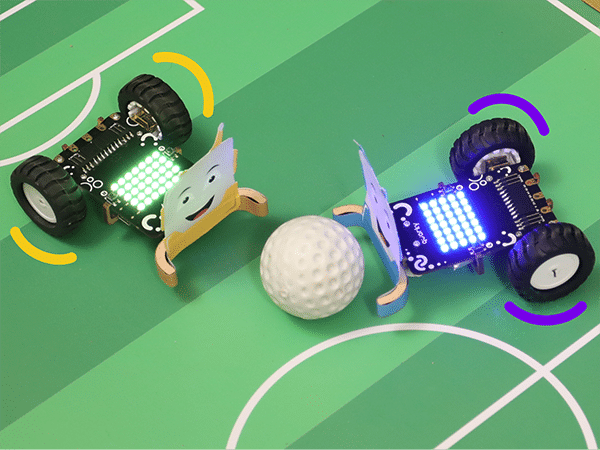
Class 9 – Coding, AI and Robotics Curriculum
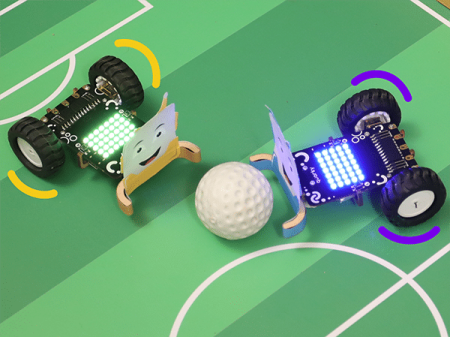
Introduction
Certified AI curriculum is aligned with international boards like CBSE / IB / IGCSE / ICSE / CSTA / CIE and specifically designed grade-wise AI syllabus for students of grade 5 to introduce them to technological activities in Artificial Intelligence, Robotics, Coding, and much more with Python.
- Prerequisites: None
- Kits Required: AI & Robotics Lab, or AI Classroom Bundle
- Programming Software: PictoBlox (Python Coding)
Learning Outcomes
After completing this curriculum, students will have a basic understanding of robotics, coding, and artificial intelligence with the help of a wide variety of projects in Python.
Apart from the aforementioned learning outcomes, this curriculum will also help them develop important skills such as problem-solving and debugging techniques, critical thinking, logical reasoning, and creativity.
Curriculum Lesson Plan
Module 1: Coding

Lesson 1: Introduction to Python Programming
- Objective: Learn about about the concept of programming, and it’s applications in the real world. Describe, about Python programming language, and how Python codes can be written in Pictoblox Python interface.
- Activity 1: This activity teaches different sections of the PictoBlox Python interface as well as the palettes in it, and start their journey in coding. Prepare a coding project, to animate Tobi (a sprite) introducing itself.
- Mode: Practical (Coding Basics)

Lesson 2: Animation With Python
- Objective: Learn about different sections of the PictoBlox and start their journey in coding.
- Activity 1: This activity teaches how to Create a coding project within the PictoBlox environment, wherein they will create an animation of Tobi (a sprite) walking around.
- Mode: Practical (Coding Basics)
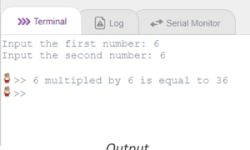
Lesson 3: Variable Basics
- Objective: Learn about what are Operators and Variables in Python. Understand all the Operators and Data Types in Python.
- Activity 1: This activity teaches how to Create different types of basic models that with the use of operators and variables.
- Mode: Practical (Coding Basics)

Lesson 4: Getting Started with Quarky
- Objective: Quarky. Understand different functions related to Quarky and implement them while writing the code.
- Activity 1: This activity teaches how to Prepare a coding project, to display emotions on Quarky. Prepare a coding project, to create a name badge with quarky.
- Mode: Practical (Coding Basics)

Lesson 5: Functions in Python
- Objective: Learn about different functions used in Python. Implement various Python functions in the codes.
- Activity 1: This activity teaches how to different user defined functions used in python. Prepare a code to calculate various properties of cube. Prepare a code to calculate Right angle Trigle.
- Mode: Practical (Coding Basics)

Lesson 6: Conditional Programming
- Objective: Learn about different control flow structures in Python and if-else statement in python.
- Activity 1: This activity teaches how to Analyse the problem, decide and evaluate conditions. Prepare code for identifying whether a given shape is triangle or not.
- Mode: Practical (Coding Basics)
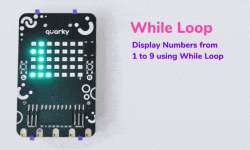
Lesson 7: Loops in Python-While Loop
- Objective: Learn about different types of loops available in python. Describe about the usage, and working of a loop and Analyse and decide on an appropriate combination of Loops and Conditions.
- Activity 1: This activity teaches how to Prepare a coding project on number counter using quarky. Prepatre a coding project on Average Age.
- Mode: Practical (Coding Basics)
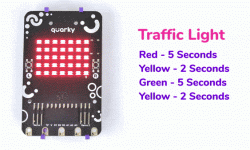
Lesson 8: Loops in Python-For Loop
- Objective: Learn about the usage, and working of the for loop. Analyze and decide on an appropriate combination of Loops and Conditions.
- Activity 1: This activity teaches how to Prepare coding projects on Individual LED Control and LED looping using Quarky and Pictoblox python interface.
- Mode: Practical (Coding Basics)

Lesson 9: Working with Strings
- Objective: Learn about the way Python stores and uses strings. Describe the way strings are traversed with a loop.
- Activity 1: This activity teaches string functions. Prepare a coding project on working with string. Prepare a coding project on String Case.
- Mode: Practical (Coding Basics)
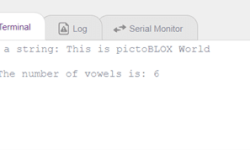
Lesson 10: Lists in Python
- Objective: Learn about the concepts of mutable sequence types in python Describe the usage of list for storing a large amount of data in memory.
- Activity 1: This activity teaches how to Create, access and manipulate list objects Use various functions & methods to work with a list.
- Mode: Practical (Coding Basics)

Lesson 11: My Friends List
- Objective: Learn about the concept of mutable sequence types in Python. Appreciate the use of a list to conveniently store a large amount of data in memory.
- Activity 1: This activity teaches to Create, access & manipulate list objects. Use various functions & methods to work with a list. Prepare a coding project to create a friends list.
- Mode: Practical (Coding Basics)
Module 2: Artificial Intelligence
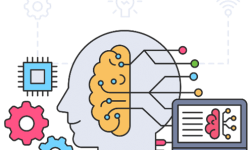
Lesson 12: Introduction to Artificial Intelligence
- Objective: Learn about the difference between human intelligence and artificial intelligence. Appreciate the advantages of using AI. Correlate with the real-world applications of AI to generate an AI mindset.
- Activity 1: This activity teaches the application of AI in their daily lives. Identify the 3 domains of AI.
- Mode: Practical (Coding Basics)

Lesson 13: Getting an AI Education
- Objective: Learn about the various areas where Artificial Intelligence is relevant in our lives. Correlate with the real-world applications of AI to generate an AI mindset.
- Activity 1: This activity teaches how to Describe the way AI is playing a pivotal role nation building and development
- Mode: Practical (Coding Basics)
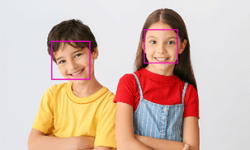
Lesson 14: Face Detection
- Objective: Learn about Face detection in image Describe about various Face detection functions in PictoBlox.
- Activity 1: This activity teaches how to Implement the face detection functions while writing the code. Prepare a coding project on face detection in python using pictoblox.
- Mode: Practical (Coding Basics)

Lesson 15: Face Emotion Detection
- Objective: Learn about the concept of face detection. Implement the face detection in real-life projects.
- Activity 1: This activity teaches to Prepare a coding project on face expression detection using Pictoblox. Prepare a expression Detector using Quarky by applying concepts of AI.
- Mode: Practical (Coding Basics)

Lesson 16: Face Filters
- Objective: Learn about the real-world applications of AI to generate an AI mindset.
- Activity 1: This
- Mode: Practical (Coding Basics)

Lesson 17: Computer Vision Object Detection Part-1
- Objective: Learn about how computers can be made to gain a high-level understanding of digital images or videos to automate tasks that the human vision can do.
- Activity 1: This activity teaches the AI concept of Computer Vision. Object detection functions in PictoBlox.
- Mode: Practical (Coding Basics)

Lesson 18: Computer Vision Object Detection Part-2
- Objective: Learn about object localization and applications of Computer Vision.
- Activity 1: This activty teaches how to write a code that will perform object detection. The object detection will be performed on an image that we upload on the PictoBlox stage as a backdrop.
- Mode: Practical (Coding Basics)

Lesson 19: Waste Management System – Part 1
- Objective: Learn about waste and differentiate types of waste i.e. Biodegradable & Non-Biodegradable Waste, waste management, Explicate the advantages of waste management system.
- Activity 1: This activity teaches Advantages of waste management How to make a waste management system?
- Mode: Practical (Coding Basics)

Lesson 20: Waste Management System – Part 2
- Objective: Learn about how to Build our own waste management system using PictoBlox and Quarky.
- Activity 1: This activity teaches to create our own waste management system i.e.which would be able to classify the solid waste types using Quarky and object detection in PictoBlox.
- Mode: Practical (Coding Basics)

Lesson 21: Introduction to Machine Learning – Part 1
- Objective: Learn about Machine learning Training data & ML models ML in PictoBlox.
- Activity 1: This activity teaches to Classifying images into different classes based on their characteristics: Mask On, Mask Off, or Mask Incorrect..
- Mode: Practical (Coding Basics)

Lesson 22: Introduction to Machine Learning – Part 2
- Objective: Learn about the machine learning process and ML models in PictoBlox to construct ML projects.
- Activity 1: This activity teaches how to Construct an ML model that categorizes whether a person is wearing a mask accurately or not.
- Mode: Practical (Coding Basics)
Module 3: Robotics
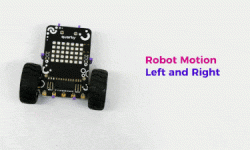
Lesson 23: Basics of Robotics
- Objective: Learn about What is a robot, Advantages of robots, and Applications of robots.
- Activity 1: This activity teaches bout robots and their uses, as well as how to make their own robot using Quarky.
- Mode: Practical (Coding Basics)

Lesson 24: Robotics Motion
- Objective: Learn about What is a robot? Advantages of robots Applications of robots How to make a robot using Quarky?
- Activity 1: This activity teaches how to Implement the concepts learned to make an activity to make your robot move forward, left, right, and back.
- Mode: Practical (Coding Basics)
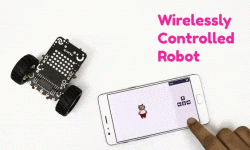
Lesson 25: Wirelessly Control Robot
- Objective: Learn about how to make a robot move using keys?
- Activity 1: This activity teaches to Implement the concepts learned to make an activity to make your robot move forward, left, right, and back with keys.
- Mode: Practical (Coding Basics)

Lesson 26: Introduction to Sensors
- Objective: Learn about What are line-following robots? How does the IR sensor work?
- Activity 1: This activity teaches how to Calibrating the IR sensor and how to make a Line Following Robot.
- Mode: Practical (Coding Basics)
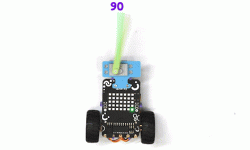
Lesson 27: Introduction to Actuators
- Objective: Learn about what are an actuator and a servo motor? Assemble an Obstacle avoidance robot and Calibrate a servo motor.
- Activity 1: This activity teaches to Implement the concepts learned to make an activity to rotate the servo motor’s shaft at different angles, such as 0, 90, and 180 degrees.
- Mode: Practical (Coding Basics)
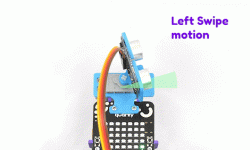
Lesson 28: Face Expression Detector
- Objective: Learn about the real-world applications of AI to generate an AI mindset.
- Activity 1: This activity teaches to Create a Servo Sweep activity and another activity of a Face Tracking Robot using Quarky by applying concepts of AI.
- Mode: Practical (Coding Basics)

Lesson 29: Obstacle Avoidance Robot – Part 1
- Objective: Learn about what is an Obstacle Avoidance Robot? Assemble an Obstacle Avoidance Robot.
- Activity 1: This activity teaches to Implement the concepts learned to make an activity to assemble the Obstacle Avoidance Robot.
- Mode: Practical (Coding Basics)
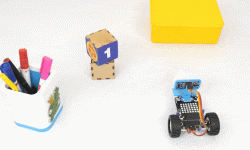
Lesson 30: Obstacle Avoidance Robot – Part 2
- Objective: Learn about how to Program and test Obstacle Avoidance Robot.
- Activity 1: This activity teaches how to Implement the concepts learned to make an activity to program and test Obstacle Avoidance Robot.
- Mode: Practical (Coding Basics)
How to execute this curriculum?
If you are a school, activity center, or institution looking to implement the coding, Artificial Intelligence, and Robotics curriculum, you are then at the right place. STEMpedia provides the right ecosystem to implement it.
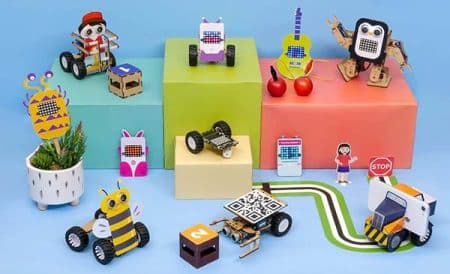
AI & Robotics Lab and Classroom Bundles
Equip your school with a Next-Gen AI laboratory along with the best AI-learning kits Quarky, DIY kits like Mars Rover and Humanoid, consumables, and hands-on projects and activities making your students AI learning journey superfun!
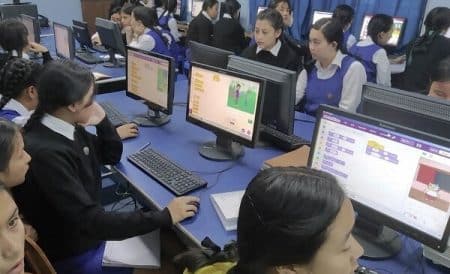
Coding and AI Platform
Get unlimited access to AI-ML projects like face detection, object classification, machine learning models, self-driving car, and speech recognition with PictoBlox – programming software for schools with Block & Python coding environment! Avail of premium features like bulk account creation and assignment submission with AI Lab.

Teacher Development Programs
For delivering Artificial Intelligence and Machine Learning education to students, our master AI trainers will train and upskill the computer science teachers, STEM faculty, and school IT staff. We provide dedicated live training sessions and curated short courses for teachers.

Structured Curriculum & Resources
Certified AI curriculum is aligned with international boards like CBSE/IB/IGCSE/ICSE/CSTA/CIE and specifically designed grade-wise AI syllabus for students of grades 3rd to 12th to introduce them to technological activities in Artificial Intelligence, Robotics, Coding, and much more.
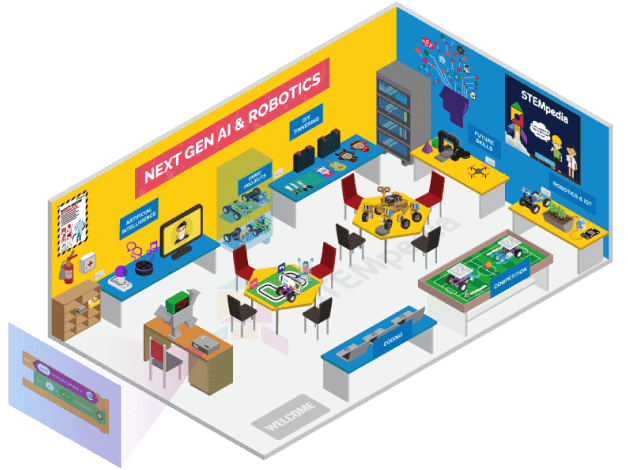
AI and Robotics Lab
Cubicle of knowledge offering AI & Robotics education with a comprehensive curriculum, interactive robots, hands-on projects, and real-life applications!
Contact Us
Implement this curriculum at your School / Activity Center!
Explore Other AI & Robotics Class-wise Curriculum





